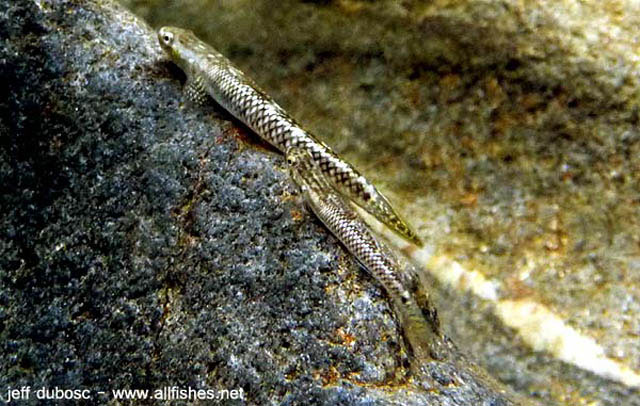| Gobiidae (Gobies), subfamily: Sicydiinae |
| 6 cm SL (male/unsexed); 4.24 cm SL (female) |
|
demersal; freshwater; depth range - 5 m, amphidromous |
| Asia and Oceania: occurs in Indonesia, on the northern coast of New Guinea, Admiralty Islands, Halmahera Island, Bismark Archipelago, Bougainville, Vanuatu and New Caledonia (Ref. 87781). |
|
Second dorsal fin with 9 segmented rays; usually 15 pectoral fin rays; lateral scales extend dorsal to pectoral base, usually 33-36; belly scaled close to pelvic disc; males with first dorsal fin higher than second dorsal fin, spines not filamentous; predorsal midline with 9-17 cycloid scales; males blackish, 5 or 6 bars between second dorsal and anal fins; and females with midlateral band straight with blotchy patches on caudal peduncle. |
| The species is found in coastal steams, in clear and oxygen rich water, in the lower course of rivers, up to 50 m in altitude. It prefers rocky substrates, with boulders and pebbles, and slow to medium currents (pools). It feeds on algae and small invertebrates, scraping them of the surface of the rocks. The species is amphidromous. After the reproduction in freshwater, larvae go at sea where they undergo a planktonic life for several months (Ref. 87781). Inhabits large and quite streams, preferring pools and backwater areas. (Ref. 26040). |
|
Least Concern (LC); Date assessed: 23 August 2011 Ref. (130435)
|
| harmless |
Source and more info: www.fishbase.org. For personal, classroom, and other internal use only. Not for publication.

